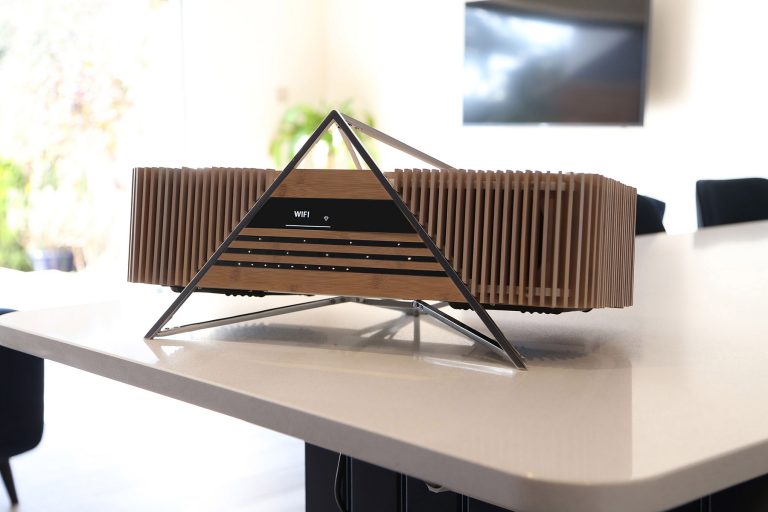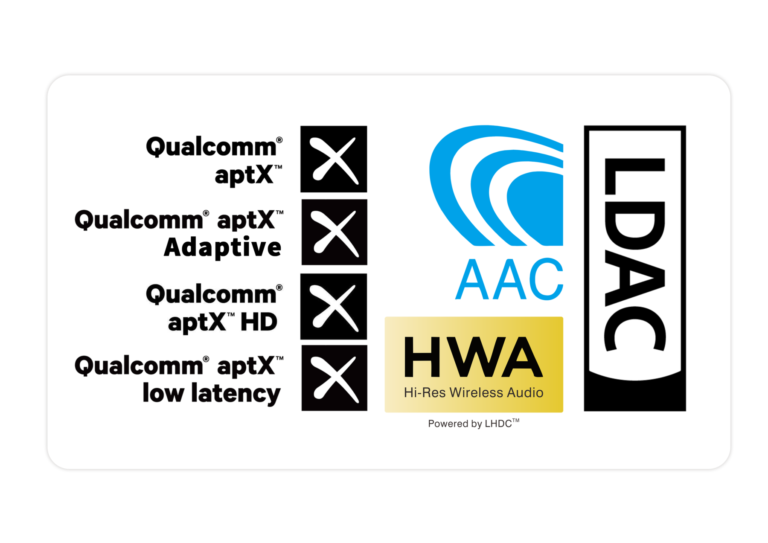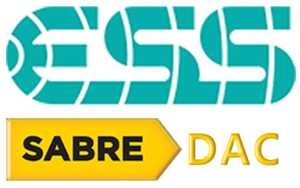French design.
Japanese inspiration.
Our designer, Julien Haziza, drew inspiration from Japanese industrial designers and architecture – namely Shigeru Ban, Tadao Ando and the Omotesandō and Harajuku districts in Tokyo.
Clad in bamboo and elevated by a distinctive aluminium frame, the Aurora’s design is striking. It mimics the grand scale of Japanese architecture – crisp, clean lines intertwined with a hint of vintage. Very fitting for the tour de force that is our premium wireless music system – Aurora.
Music amplified by emotion
Aurora is driven by PureEmotion®, an ingenious fusion of amp technologies – brand new and original to iFi.
It delivers a sound that combines the purity of tone with a high level of engagement, speed and dynamic gusto, ensuring the emotive quality of music is delivered in full effect – which is why we call it PureEmotion®.

Analogue. Authentic.
Many audio products use digital signal processing (DSP) to deliver a big, spacious sound from a single box. This is an artificial, lossy process that detracts from the sound quality.
The clever technologies in the Aurora (and all iFI products), avoid this completely as they operate in the analogue domain.
SoundSpace® delivers a room-filling sound and gives the music a sense of scale and space you would a premium audio system.
TrueBass® delivers genuine bass with depth and definition. Everything from timpani to a bass guitar is conveyed with power and poise.

No space too big or small
With Auto Room Tailoring (ART)®, the Aurora can auto-configure the speaker array according to its position in the room.
The effect is similar to the adjustments made by a sound engineer at a live venue.
And what makes ART® special is that it’s executed in the analogue domain. Forget tinny and imagine deep, voluminous sound that captivates you. To our ears, no other music system with automatic room correction comes close.
Versatile.
Enjoy premium streaming services from Qobuz and TIDAL or standard streams from the likes of Spotify.
Aided by ART®, the Aurora adapts to the way you want to use it. It’s YOUR premium network music player. Place it under a TV, connect via Bluetooth® or optical cable and use it as a stylish soundbar. And stream your favourite music.
Link several Auroras via Wi-Fi to create a multi-room system, playing in sync or individually. Whether you’re streaming from a premium music service or surfing the infinite number of internet radio stations via TuneIn, the Aurora has your music needs covered.
Barnstorming Bluetooth
Aurora uses Bluetooth5.0® — the very latest version with the newest Qualcomm 5100 series chipset. There’s also the super-smooth ESS Sabre DAC chip.
All current and future Bluetooth® audio formats are supported including aptX and aptX HD, aptX Low Latency, aptX Adaptive, LDAC and HWA/LHDC, hi-res Bluetooth® codecs created by Sony and Huawei respectively. Also, we have Apple’s favoured format, AAC.
Every codec is covered at the highest resolution Bluetooth® specification. It’s the only premium Bluetooth music system you need.

Future-proofed.
In addition to wireless connectivity there’s plenty of cable inputs — optical, coaxial, USB and Ethernet inputs cater for digital sources, while a 3.5mm socket provides an Alexa/analogue input. There is even a slot for audio stored on micro SDHC cards.
Aurora, with its awe-inspiring sound sustainable bamboo design, is a truly stunning addition to any home. No other premium all one system wireless music system looks or sounds this good.
Once you’ve heard it, we’re sure you will agree – She’s Electric.
Shigeru Ban (坂 茂 Ban Shigeru, born 5 August 1957) is a Japanese architect, known for his innovative work with paper, particularly recycled cardboard tubes used to quickly and efficiently house disaster victims.
He was profiled by Time magazine in their projection of 21st-century innovators in the field of architecture and design. Find out more here.
Tadao Ando (安藤 忠雄 Andō Tadao, born 13 September 1941) is a Japanese self-taught architect whose approach to architecture and landscape was categorized by architectural historian Francesco Dal Co as “critical regionalism”.
Read more here.
Omotesandō is known as one of the foremost ‘architectural showcase’ streets in the world, featuring a multitude of fashion flagship stores within a short distance of each other.
These include the Louis Vuitton store (Jun Aoki, 2002), Tod’s (Toyo Ito, 2004), Dior (SANAA, 2004), Omotesandō Hills (Tadao Ando, 2005) and Gyre (MVRDV, 2007), amongst others. More here.
Most modern systems use Digital Signal Processing. DSP samples analogue soundwaves into a limited set of numbers and records them. The overuse of DSP can result in an overcompressed unnatural sound and the translation and reassembly of data make digital devices prone to loss of quality.
All iFi products use Analogue Signal Processing as we believe it is better suited to audio. ASP does not cause signal quality to be lost as it records waveforms as they are and produces a more natural sound.
Lossless and lossy compression are terms that describe whether or not, in the compression of a file, all original data can be recovered when the file is uncompressed.
With lossless compression, every single bit of data that was originally in the file remains after the file is uncompressed.
On the other hand, lossy compression reduces a file by permanently eliminating certain information. Lossy audio files do not retain the natural authenticity of the original.
This is the latest version of the Bluetooth wireless communication standard.
Its main benefits are improved speed and greater range – it’s faster and can operate over greater distances than older versions of Bluetooth. You can find out more here.
DACs convert digital information, stored or streamed by computers, into music we can hear through speakers or headphones.
Every device that’s a source of digital sound has a built-in DAC (TVs, games consoles, CD players, phones, portable music players etc). Dedicated external DACs sound much better than standard DACs used in digital devices such as phones.
aptX Bluetooth transmission is found in most Android phones, media players, Apple computers (macOS on iMacs and MacBooks) and on higher-quality Bluetooth headphones. It is not available on iOS (iPhones and iPads use Advanced Audio Codec).
LDAC is an audio coding technology developed by Sony, which allows streaming audio over Bluetooth connections up to 990 kbit/s at 24 bit/96 kHz (also called high-resolution audio).
It is used in Sony headphones, smartphones, portable media players, active speakers and home theatres.
LDAC is a lossy codec which means is discards some of musical info to make the file smaller.
HWA is Bluetooth® wireless audio powered by LHDC™ and used by Huawei.
LHDC™ is codec developed by Savitech and stands for ‘low latency and high definition’ audio. Compared to standard Bluetooth®, it allows 3 times more musical date to be transmitted.

































